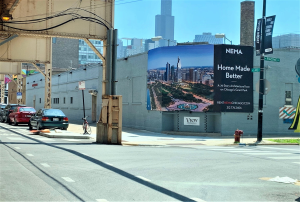Advertising Buses: Why Visibility Doesn’t Equal Value
It’s hard to ignore a wrapped city bus driving by with a splashy logo or campaign message. But as marketing professionals shift toward data-driven campaigns, a harsh truth emerges: advertising buses may look bold, but they rarely deliver on ROI.
Bus ads have long been considered a form of mobile billboard advertising. However, in today’s performance-first landscape, more marketers are realizing that these formats lack the tracking, attribution, and consumer journey insights needed to justify spend.
The Illusion of Reach in Bus Ads
One of the most touted benefits of bus advertising is sheer visibility. Agencies will often claim hundreds of thousands of daily impressions due to city traffic. But let’s take a closer look:
No guarantee of attention: A driver in traffic may glance at a bus ad—or may be focused on the road, music, or their phone.
No engagement metric: Unlike digital channels, a bus ad can’t track how long someone looked at it, what they did afterward, or if they even noticed it.
No targeting: Advertising buses delivers a message to everyone and no one at the same time. It’s spray-and-pray in motion.
In a time when brands expect clicks, conversions, and remarketing lists, bus advertising falls flat.
Advertising Buses: Lack of Attribution in the Buyer’s Journey
Attribution is the name of the game in modern marketing. With tools like UTMs, conversion pixels, and CRMs, we can follow the customer journey from ad exposure to purchase.
Bus advertising offers none of that.
You don’t know:
Who saw the ad
When or where they saw it
Whether it influenced a decision
If they acted at all
Without QR codes (which few scan in passing), or digital integrations (which are rarely embedded in a physical bus ad), marketers are left guessing. And when budgets are tight, guessing just isn’t good enough.
Bus Advertisement vs. Trackable In-Hand Media
If your goal is tangible, provable ROI, in-hand media offers a far more accountable path.
Take coffee sleeve ads, pizza box toppers, or pharmacy bag ads:
QR codes track scans
You can geo-fence distribution
You can link to personalized landing pages
You can track redemptions or sales tied to promo codes
By comparison, a bus ad in motion can’t even confirm if it was seen by a human.
What the Data (Doesn’t) Say About Bus Ads
Many vendors tout studies that claim bus ads improve recall or brand awareness. But few go further. Here’s what most bus advertising data omits:
Click-through rate? Doesn’t exist.
Cost per acquisition? Not measurable.
Customer lifetime value from the campaign? Forget it.
Bus ads might get your brand seen. But they won’t get your brand chosen—at least not in any way you can measure, refine, or optimize.
The Hidden Costs of Bus Ad Campaigns
Let’s talk budget. On the surface, advertising buses may seem affordable compared to billboards. But consider these hidden expenses:
Production costs for full or partial wraps
Installation and removal fees
Design limitations due to bus layout and city regulations
Lack of flexibility — once it’s up, you’re stuck with it for weeks or months
When a bus ad isn’t performing, there’s no A/B testing, no real-time tweaking, and no pause button.
Marketing Alternatives That Outperform Bus Ads
If your goal is targeted visibility and measurable engagement, here are better options than bus advertising:
In-hand media (e.g., coffee sleeves, bar coasters)
Geo-targeted mobile ads
Sponsored content with embedded CTAs
DOOH placements with digital tracking features
Each of these alternatives provides a feedback loop: impressions, engagements, actions, and conversions. Something no bus advertisement can offer.
The Psychology of Motion: Why Ad in Bus Format Gets Ignored
Let’s not forget how our brains work. Humans process static, high-contrast imagery far better than moving targets. Advertising buses often fails because:
The viewer is in motion or distracted
The message is fragmented across the moving surface
There’s not enough dwell time to absorb the message
Compare this with an ad on a coffee cup or a bar coaster—held in hand, studied over minutes, and discussed socially. One is drive-by awareness. The other is immersive.
The Verdict: Bus Ads Are Built for Visibility, Not Conversion
And visibility without conversion is vanity.
In today’s media climate, where accountability and precision are table stakes, advertising buses just doesn’t deliver. It might feel bold. It might look creative. But if you can’t attribute ROI, it’s a gamble.
There are smarter, more cost-effective, and better-tracked options for marketers who want both impact and insight.
Final Thoughts
It’s time we reframe the conversation around bus ads. They’re not inherently bad. But they belong to a different era of advertising—one where branding was about being seen, not being measured.
For the modern marketer, that era is over.
If you’re being asked to justify spend, report outcomes, and optimize campaigns, the answer is simple: skip the bus.
Put your brand in people’s hands. Where it gets noticed, engaged with, and most importantly—tracked.






